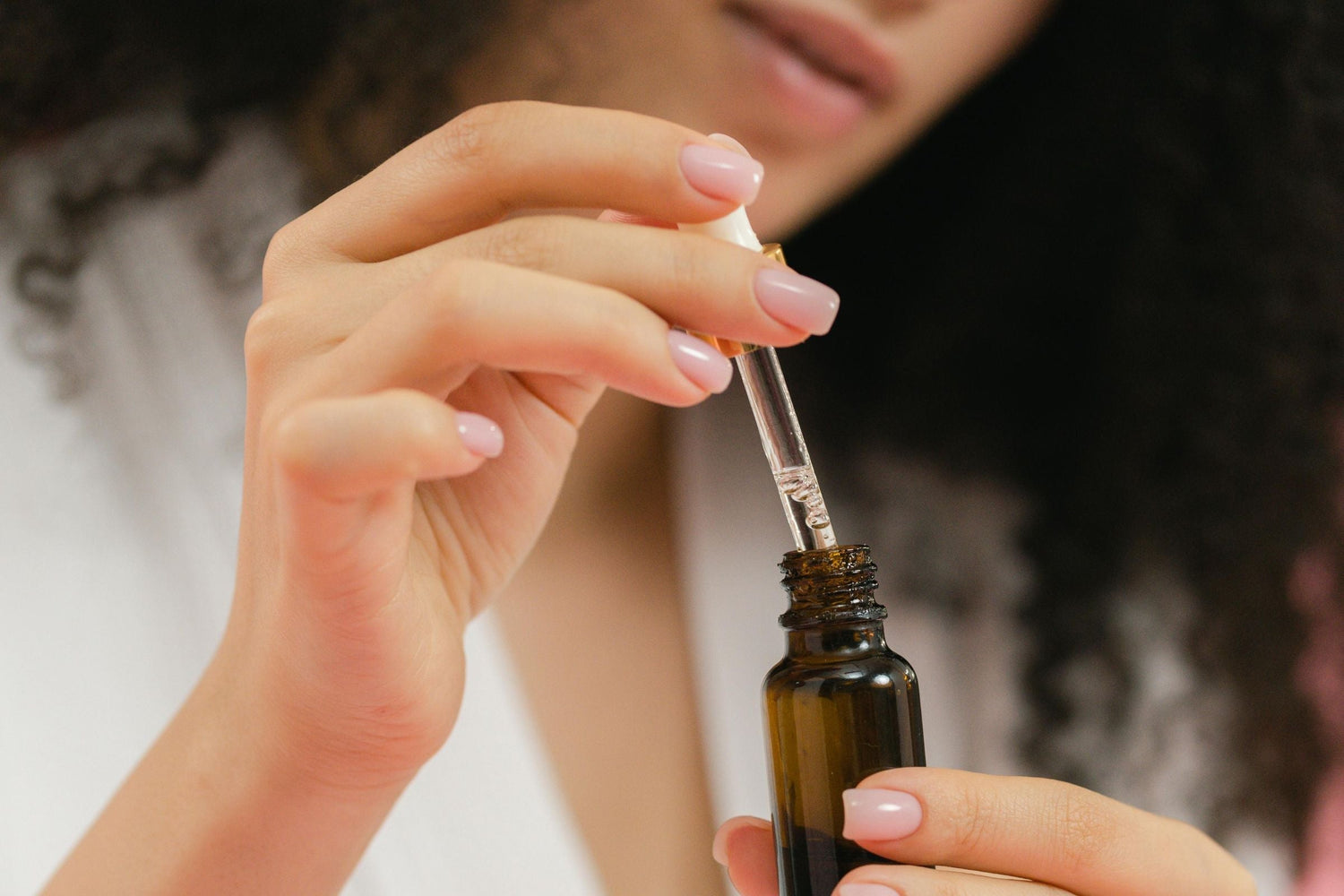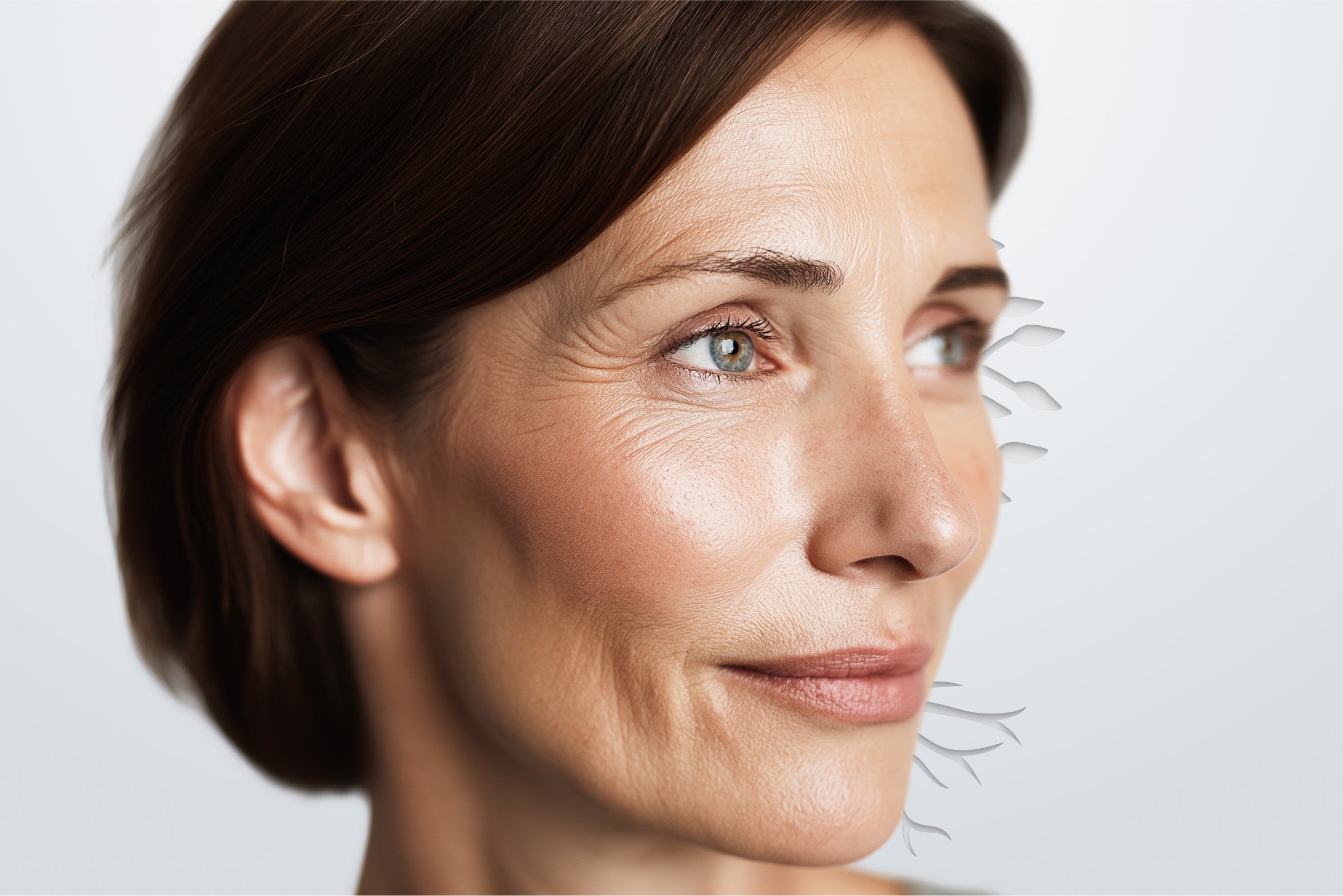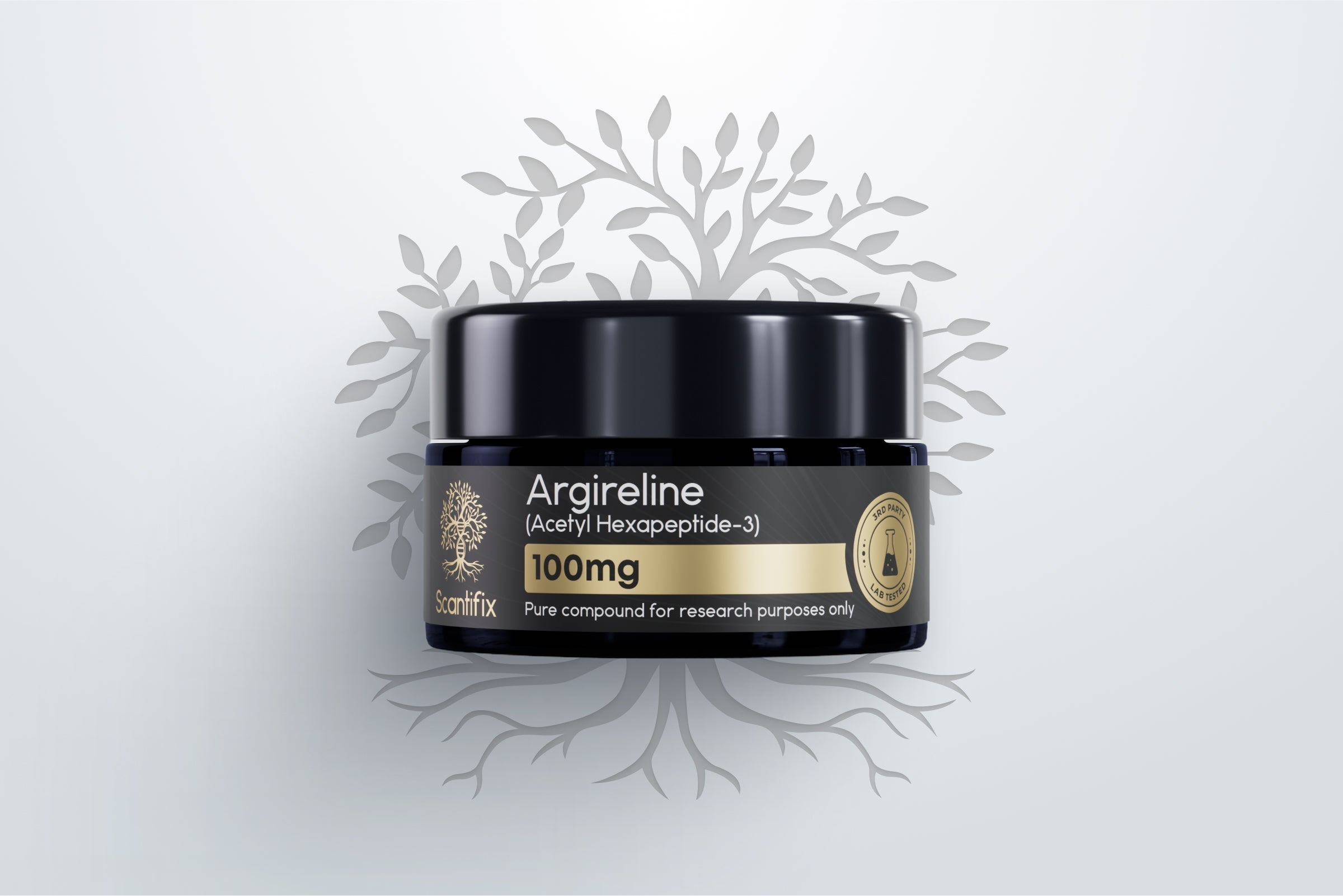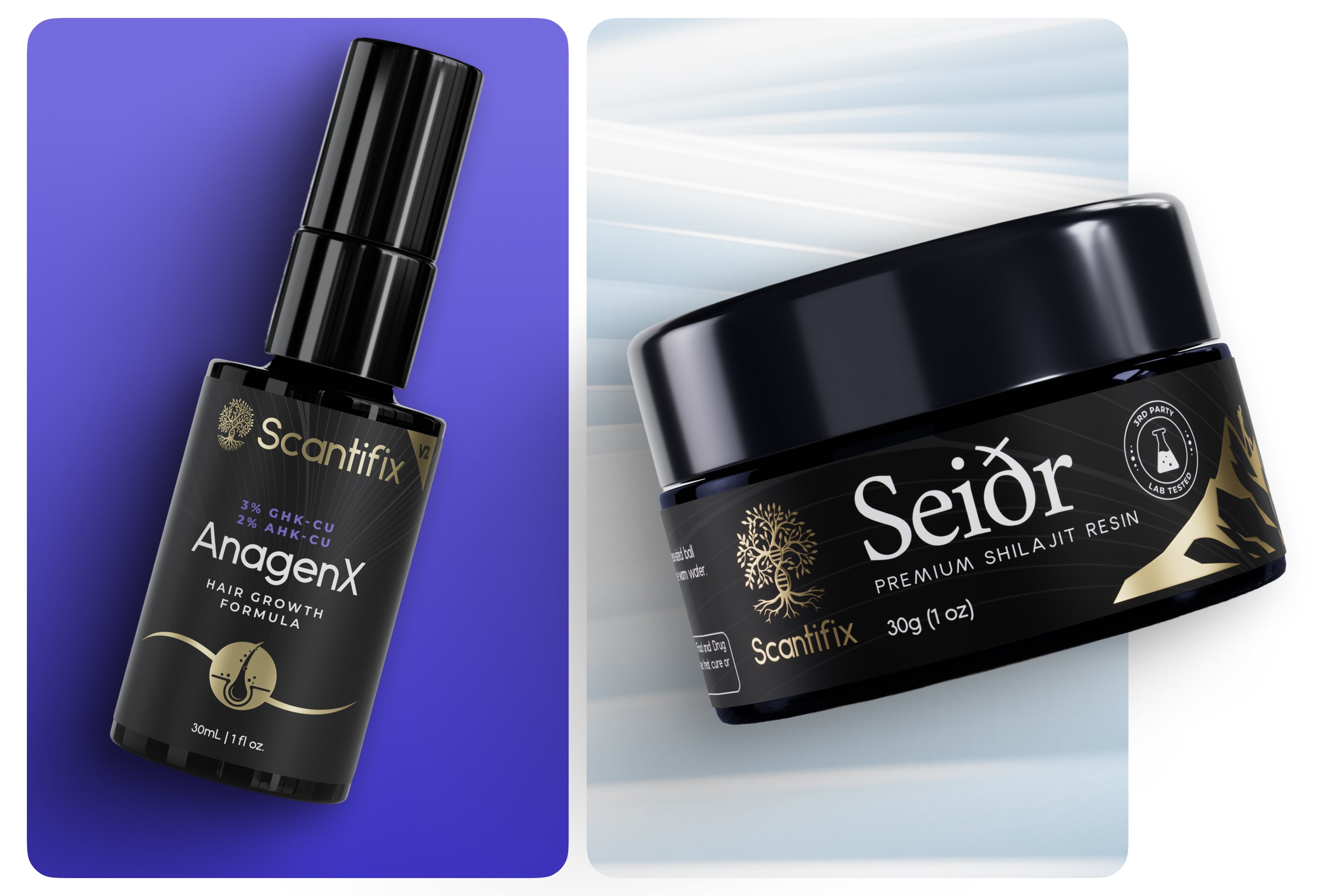Skin health depends on several key foundations, and two of the most important are hydration and repair. Hydration keeps the surface supple, smooth, and resilient against daily stress. Repair maintains deeper structures like collagen and elastin, which give skin its firmness and elasticity. Few single ingredients can do both at once, which is why targeted skincare products often combine multiple, complementary, active ingredients.
One combination that works particularly well is hyaluronic acid and peptides—with hyaluronic acid offering instant hydration, while peptides signal deeper, cellular repair. Together, they create a synergy that delivers both immediate surface effects and long-term structural transformation, making hyaluronic acid an ideal base for peptide serums. In this guide, we'll explore how hyaluronic acid works, why it pairs so well with peptides, and how you can harness their combined benefits in your own formulations.
What Is Hyaluronic Acid?
Hyaluronic acid (HA) is a naturally occurring glycosaminoglycan, a type of sugar-based molecule found in the skin, eyes, and joints. Its main biological role is to bind and hold water.
Despite the name, hyaluronic acid is not an exfoliating acid like glycolic or salicylic acid. The “acid” part of its name comes from its chemical structure, which includes uronic acid. In skincare, HA usually exists in a salt form (commonly sodium hyaluronate), where it functions as a gentle, biocompatible hydrator.
In the skin, HA is found in large amounts within the extracellular matrix, the structural network that surrounds cells. This environment depends on hydration to function properly, and hyaluronic acid is central to maintaining that balance.
What Hyaluronic Acid Does for Skin
Thanks to its water-binding capacity of up to 1,000 times its own weight, hyaluronic acid serves as the skin’s natural hydration reservoir. It draws moisture into the upper layers and helps prevent transepidermal water loss. The result is smoother, more comfortable skin with a plump, healthy appearance.
However, natural HA levels decline with age. Sun exposure, pollution, and dehydration accelerate this process. As HA diminishes, skin often becomes drier, more fragile, and prone to fine lines. Topical application helps replenish this loss, making HA-based serums a go-to in modern skincare (Papakonstantinou et al., 2012).
The Forms of Hyaluronic Acid
Hyaluronic acid occurs in a range of molecular sizes, and each form interacts with the skin in its own way. These variations determine how deeply HA can travel into the layers of the epidermis and what type of benefit it delivers:
-
- High molecular weight HA stays at the surface, forming a light, protective film that locks in moisture and smooths the skin right away.
- Medium molecular weight HA penetrates a little deeper, helping maintain elasticity and suppleness.
- Low molecular weight HA can travel further into the upper layers of the epidermis, where it supports repair processes and longer-term hydration.
- Oligomeric or very low molecular weight HA is made of the smallest fragments. These can reach the deepest layers of the epidermis and may influence skin signaling pathways, though they are used more carefully in formulations.
Many advanced serums combine two or more of these forms to create layered hydration. This delivers immediate surface comfort while also supporting deeper skin resilience over time (Papakonstantinou et al., 2012).
Hyaluronic Acid and Peptides in Combination
Hyaluronic acid and peptides are independently effective, but research shows that pairing the two can create results that go beyond what either achieves alone.
Peptides stimulate the skin’s own HA production
Certain peptides have been shown to encourage fibroblasts and keratinocytes to produce more hyaluronic acid and collagen internally (Robinson et al., 2022). So while using HA as a carrier base helps hydrate on contact, peptides can also help restore the skin’s ability to generate its own HA from within.
Texture and strength
Hyaluronic acid smooths and hydrates the skin’s surface immediately. Beneath, peptides reinforce collagen and elastin. This combination improves firmness, reduces the depth of wrinkles, and enhances overall skin texture. Clinical studies show that formulations containing both peptides and HA lead to measurable improvements in elasticity and structure (Gold et al., 2022; Akulinina et al., 2022).
Peptide Absorption
Some early-stage research suggests that low molecular weight HA may influence skin permeability, potentially allowing certain peptides to be absorbed more effectively. This outcome depends on the specific peptide and formulation, but it illustrates how HA can create favorable conditions for improved delivery of actives.
Peptide Stability
HA gels may help create a moisture-rich environment that reduces peptide degradation. While not a substitute for preservatives, this hydrated environment may help extend peptide activity on the skin.
Together, HA and peptides offer hydration and repair in balance, which is why they perform especially well in custom serums.
Hyaluronic Acid and Peptides in Skincare: Why DIY Is Most Effective
Because hyaluronic acid is water-based and peptide-compatible, it is uniquely suited as a base for custom formulations. When peptides are reconstituted directly into HA, you avoid unnecessary additives and ensure you’re working with actives at their most effective.
Creating your own peptide + HA serum has several advantages:
-
- Customization: Choose peptides that align with your specific goals. For example, regeneration with GHK-Cu, firmness with Matrixyl, or smoothing with SNAP-8.
- Potency: Freshly reconstituted peptides retain their full activity, without sitting for months in pre-mixed bottles.
- Purity: DIY formulations avoid fragrances, fillers, or preservatives that can interfere with results or irritate skin.
- Value: Buying raw peptides and a hyaluronic acid base is often more cost-effective over time than relying on multiple commercial serums.
DIY skincare requires care, but it gives you a level of control and transparency that off-the-shelf products rarely match.
How to Make Your Own Peptide + Hyaluronic Acid Serum
Formulating a peptide + hyaluronic acid (HA) serum is straightforward, but it benefits from a careful approach.
-
- Reconstitute the peptide with HA or sterile water. Each peptide is slightly different, but this step is essential before blending.
- Blend with hyaluronic acid as the base. This creates a stable, hydrating medium that supports peptide delivery.
- Check compatibility. Some peptides require careful attention to compatibility with other ingredients. Avoid mixing peptides with strong acids, oxidizing agents, or unstable actives that can disrupt their integrity. Hyaluronic acid is an excellent base because it maintains a neutral environment that suits most peptides.
- Work cleanly. Use sanitized glass vials, droppers, or mixing jars to minimize contamination.
- Store properly. Finished serums should be kept in airtight, light-protective containers and stored in the refrigerator..
By following these best practices, you can create a stable, high-quality serum that maximizes the strengths of both hyaluronic acid and peptides.
How to Apply in Your Routine
Once formulated, a peptide + HA serum can be used much like any professional-grade product:
- Apply to slightly damp skin so HA can draw in water more effectively.
- Use before heavier moisturizers or occlusive layers, which help lock in hydration and peptides.
- Apply morning, evening, or both depending on your routine.
- Always patch test before introducing a new peptide into your regimen.
Consistency matters more than intensity. By making this combination a regular step, you give your skin both the moisture it needs today and the resilience it needs for the long-term.
Scantifix: Supporting HA + Peptide Customization
At Scantifix, we provide peptides in their purest raw form so you can combine them directly with hyaluronic acid or other compatible carriers. We recommend HA because it not only hydrates immediately but also creates a skin-friendly base that complements peptides without interfering with their activity.
Every peptide we offer is:
-
- Third-party tested for purity and consistency with transparent Certificates of Analysis
- Lyophilized (freeze-dried) for stability and precisely pre-portioned, allowing you to reconstitute fresh into HA when you’re ready to use.
- Free of fillers and unnecessary additives, so that you know exactly what you're putting on your skin.
We're committed to providing the highest quality, purest raw peptides so that you can confidently create serums that are clean, effective, and tailored to your skin's needs.
Final Thoughts: Hydration and Repair in Harmony
When hydration and repair work together, the skin looks smoother, feels stronger, and maintains its elasticity over time. Hyaluronic acid delivers instant moisture and protection, while peptides build and reinforce structural integrity over time.
By creating your own peptide + HA serum, you can capture both of these benefits in a simple, personalized formula. With Scantifix’s high-purity peptides and a clean hyaluronic acid base, you’re able to design skincare that is transparent, effective, and built to support long-term skin health.
References
Akulinina, I. K., Stefanaki, I., Pavlíčková, E., Maiolino, M., Hajduk, S., Sápy, M., Mertin, B., Rijo, H., Tekeli, Ö., Valois, A., Delva, C., & Kerob, D. (2022). Topical formulation containing peptides and vitamin C in ampoules improves skin aging signs: Results of a large, international, observational study. Journal of Cosmetic Dermatology, 21(1), 163–171. https://doi.org/10.1111/jocd.14733
Gold, M. A., Biron, J. A., Wilson, A., & Nelson, D. B. (2022). Efficacy and tolerability of a hyaluronic acid–based serum and a peptide–rich cream for the face and neck in subjects with photodamaged skin. Journal of Cosmetic Dermatology, 21(4), 1616–1622. https://doi.org/10.1111/jocd.14981
Papakonstantinou, E., Roth, M., & Karakiulakis, G. (2012). Hyaluronic acid: A key molecule in skin aging. Dermato-Endocrinology, 4(3), 253–258. https://doi.org/10.4161/derm.21923
Robinson, D. M., Vega, J. H., Pal, M. D., Bell, M., Widgerow, A. D., & Giannini, A. (2022). Multicenter evaluation of a topical hyaluronic acid serum. Journal of Cosmetic Dermatology, 21(8), 3372–3377. https://doi.org/10.1111/jocd.15241






Leave a comment
All comments are moderated before being published.
This site is protected by hCaptcha and the hCaptcha Privacy Policy and Terms of Service apply.